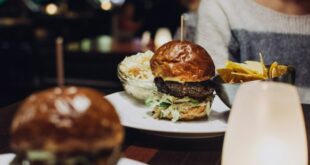Jellied pork is an essential component of Lunar New Year meals for families in northern Vietnam.
Jellied pork is a common dish prepared during the colder months. This dish, which is served cold, primarily consists of pork leg and stir-fried pork skin with wood ear, shiitake, and pepper mushrooms. The collagen in the pig’s skin allows the stir-fried meat to become jelly-like after cooling down.
Jellied pork is probably best eaten during the cold months. Many people think that a stewed pork leg that was unintentionally left outside in the cold is where jellied pork first originated. Since then, it has become a delicious delicacy that has been passed down from previous generations.
 |
|
Jellied pork is often served with steaming rice. Photo by VnExpress/Khanh Ly |
The pork knuckle, which has a good balance of lean meat, fat, and skin, is chosen to prepare this dish. To get rid of the blood stains and the pork smell, the meat will be blanched with a little salt, onion, and ginger.
A small amount of salt and fish sauce is just enough to season the dish. After being soaked, thinly sliced wood ear and shiitake mushrooms are stir-fried with marinated meat.
Cast iron pots are still used to prepare the best jellied pork even with the advent of modern pressure cookers. The broth is simmered over a low heat and must be skimmed continuously. The broth pot gives off a fragrance that reminds everyone of the aroma of Tet. It will take a long time to cook, but the end product is a pot of tender meat in a clear broth.
Skilled cooks will frequently garnish a dish with carrots that have been cut into floral forms. The carrot flowers are placed on the bottom of the bowl so that when the dish is ready and you turn it upside down, the carrot flowers are seen on top. In northern Vietnam, where Lunar New Year falls during the winter, the meat is frequently left outside for a half-day to naturally cool.
It’s impossible to resist the allure of the tender, fragrant pork and the peppery aroma. No one can say no to a bowl of hot rice eaten with jellied pork, and a side dish of pickled onions. The fattiness of jellied pork when eaten with pickled onions creates a harmonious and balanced flavor.
 |
|
Jellied pork served with pickled onions. Photo by VnExpress/Ngoc Thanh |
According to Dr. Le Quang Hao of the National Institute of Nutrition, jellied pork contains gelatin, which is beneficial for health. Jellied pork must be stored in the refrigerator after eating, and should not be stored for more than seven days.
Jellied pork is a year-round food, but during the Tet celebration it is especially popular in northern Vietnam. Along with other traditional foods, this cuisine has grown to play a significant role in the Vietnamese culinary tradition.
- Reduce Hair Loss with PURA D’OR Gold Label Shampoo
- Castor Oil Has Made a “Huge” Difference With Hair and Brow Growth
- Excessive hair loss in men: Signs of illness that cannot be subjective
- Dịch Vụ SEO Website ở Los Angeles, CA: đưa trang web doanh nghiệp bạn lên top Google
- Nails Salon Sierra Madre
 VnExpress News The News Gateway of Vietnam
VnExpress News The News Gateway of Vietnam





